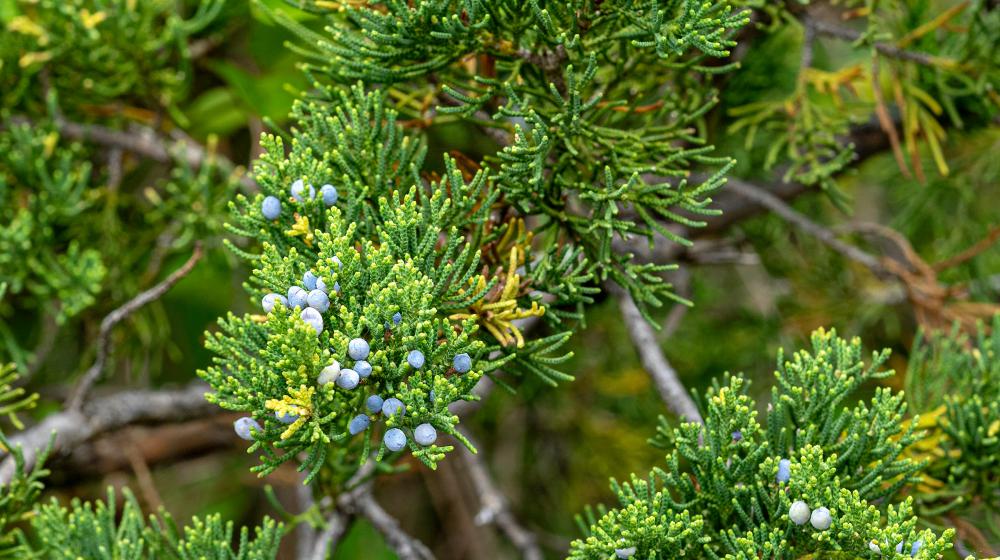Tree of the Month: Eastern redcedar

Known for its aromatic wood and ability to thrive in tough conditions, the Eastern redcedar stands out as an essential part of many landscapes.
The Eastern redcedar, scientifically known as Juniperus virginiana, is a versatile and resilient evergreen tree native to North America. Known for its aromatic wood and ability to thrive in tough conditions, the Eastern redcedar stands out as an essential part of many landscapes.
Key Features:
- Berries: They are often mistaken for true berries due to their dark blue, berry-like cones, typically 0.25 inches in diameter. They mature in one season, with a waxy coating—the sweet flesh enclosing one or two seeds. The small berries of the Eastern redcedar provide food for many bird species.
- Leaves: Usually dark green, minute, and scale-like, the leaves are positioned in four directions around the twig, making the twig appear square. The leaves can also be awl-shaped, sharp-pointed, and whitened on young growth or vigorous shoots. The tree’s scale-like, green foliage remains vibrant year-round, adding structure and beauty to landscapes.
- Bark: Eastern redcedar bark is reddish brown and fibrous, often peeling in strips to reveal smooth, cinnamon-colored wood underneath.
- Height and Size: These trees can grow up to 50 feet tall and have a fluted trunk 12 to 24 inches in diameter.
- Wood: The heartwood is aromatic and naturally resistant to rot, making it highly prized for furniture, fence posts, cedar chests, and pencils.
- Longevity: Eastern redcedars can live for several decades, with some reaching over 100 years of age.
The Eastern redcedar shines with its beauty, versatility, and environmental benefits, making it a top choice for both natural and cultivated landscapes!
To learn more about evergreen coniferous trees like the Eastern redcedar and other types of trees, check out Extension Publication 146, “Know Your Trees”.
Posted on: December 6, 2024
Subscribe to Extension for Real Life
Fill in the information below to receive a weekly update of our blog posts.
Recent Posts
January 21, 2025
January 13, 2025
December 17, 2024
Related News
September 23, 2004
September 17, 2004
July 15, 2004
December 11, 2003
January 13, 2003









